13 Best Strawberry Companion Plants For A Juicy Summer Harvest
Plus, plants to avoid pairing with strawberries.
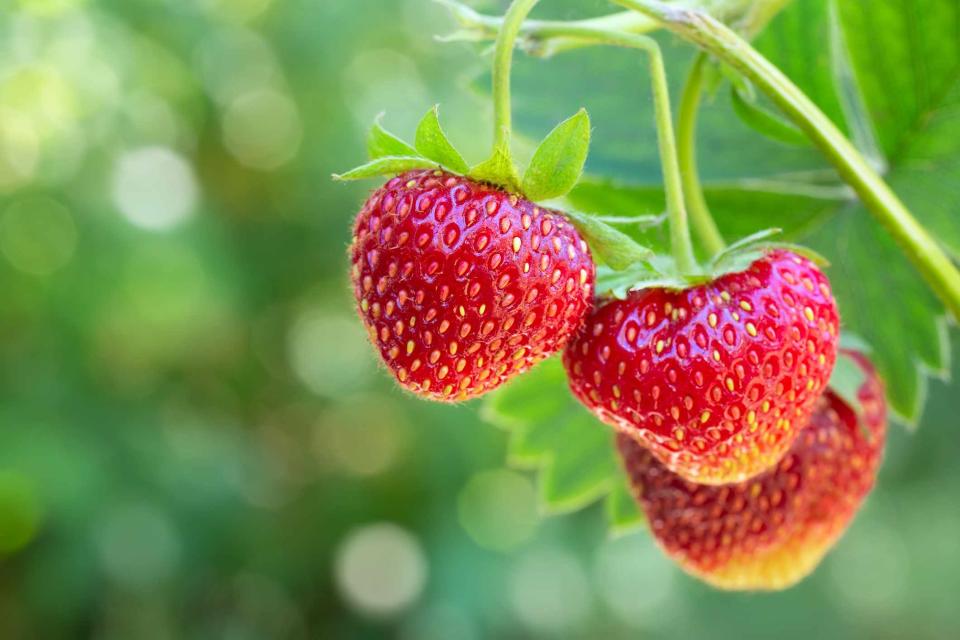
Alter_photo/Getty Images
Strawberries are one of summer's unofficial ambassadors. From strawberry pie to strawberry salad to a perfectly ripe, still-warm-from-the-sun strawberry plucked straight from the garden, these deliciously sweet berries are easy to grow in any outdoor space. You can grow them in a garden bed or in a container—they'll thrive as long as they have sun, water, and the right companions by their side.
Companion planting with strawberries is one of the best ways to guarantee an abundant summer harvest with healthy, juicy berries. Here are strawberry companion plants to help start your garden planning, as well as which plants to avoid.
What Are Companion Plants?
When you plant two flowers, vegetables, or fruits together and they two help each other grow and thrive, that's called companion planting. Depending on the pairing, the two companion plants will offer different benefits. Some plants will help ward off or distract insects that could attack the other while, in other cases, the two plants may simply require different nutrients from the soil. Other companion plants encourage pollination of the other or provide necessary shade to help the plant thrive.
Why Companion Plants Are Helpful for Strawberries
Whether it's providing shelter for summer berries from curious animals, aiding in pollination, or boosting soil quality, companion planting is one of the best ways to increase your strawberry harvest. There are plants that will help repel pesky insects and others that will add much-needed nutrients.
Particularly with those companion plants that boost pollination, your strawberry plants will produce more flowers, and flowers lead to a higher fruit yield (and what could be better than more strawberries?).
Best Companion Plants for Strawberries
As you're planning your summer garden, here are thirteen of the best companion plants to ensure you'll have a juicy strawberry harvest.
Spinach
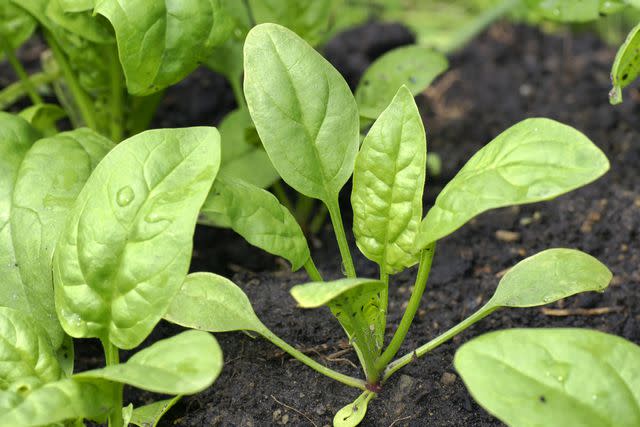
SylvieBouchard/Getty Images
Botanical Name: Spinacia oleracea
Sun Exposure: Full sun, partial sun
Soil Type: Loamy, moist, well-drained
Soil pH: Acidic, neutral, alkaline
Not only do strawberries and spinach go together beautifully in a spring salad, but they also are friendly in the garden. Both do well in small spaces, and the generous spinach leaves can help hide the vibrant strawberries from hungry squirrels and other animals.
Lettuce

PhotoAlto/Laurence Mouton/Getty Images
Botanical Name: Lactuca sativa
Sun Exposure: Full sun, partial sun
Soil Type: Loamy, rich, well-drained
Soil pH: Acidic, neutral
Lettuce has the same companion plant advantages as spinach. It grows well in a small space next to strawberries, and its leaves will help keep nature's strawberry fans away from your fruit before you've had time to harvest it.
Dill
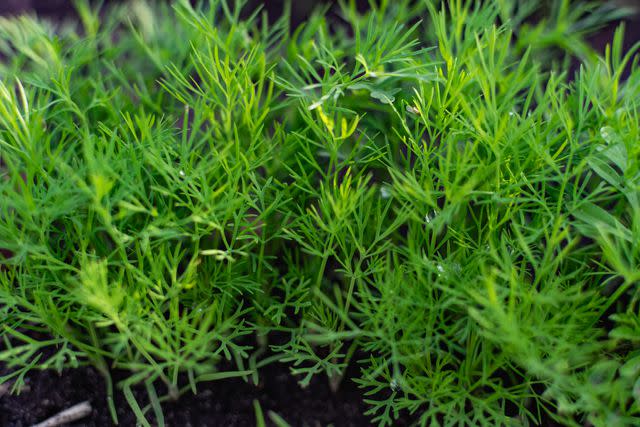
Anna Ivanova/Getty Images
Botanical Name: Anethum graveolens
Sun Exposure: Full sun
Soil Type: Rich, well-drained
Soil pH: Slightly acidic
Dill's strong scent may be a favorite of humans, but insects and predators tend to stay away at the first whiff. When dill flowers, it's typically reached the end of its life as an edible herb, but those flowers attract hoverflies. Hoverflies feed on aphids, which love to attack strawberries. It's a beneficial cycle made possible by companion planting.
Marigolds
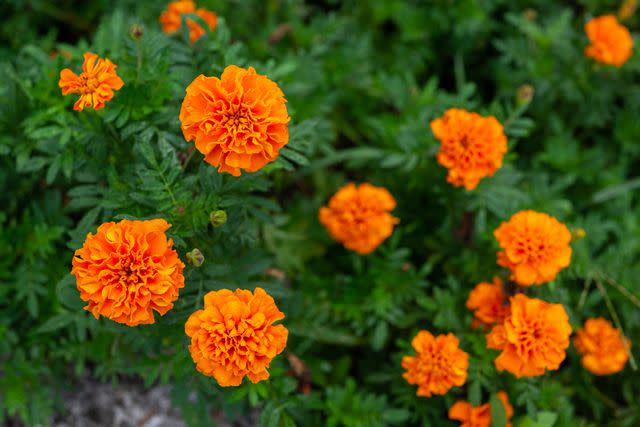
wulingyun/Getty Images
Botanical Name: Tagetes spp.
Sun Exposure: Full sun
Soil Type: Moist, well-drained
Soil pH: Slightly acidic to neutral
Marigolds are one of the best friends any garden could have thanks to their strong smell which is almost universally unappealing to pests. They also repel the root-knot nematode, which is known to prey on strawberries.
Sage
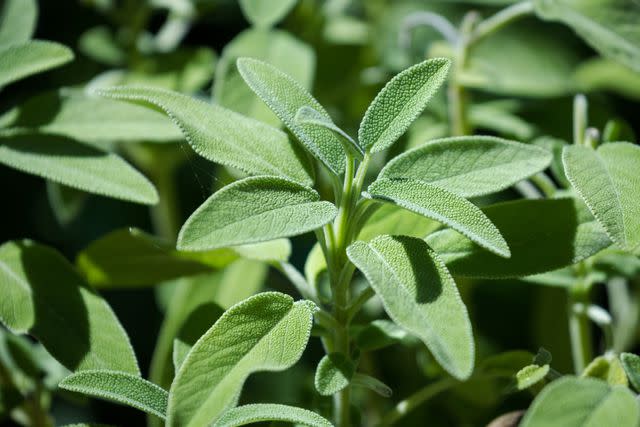
RayTango/Getty Images
Botanical Name: Salvia officinalis
Sun Exposure: Full sun
Soil Type: Loamy, sandy, well-drained
Soil pH: Acidic to neutral
Sage not only attracts pollinators with its purple flowers, but it has a strong scent that can throw off predators looking for a summer berry snack.
Catnip
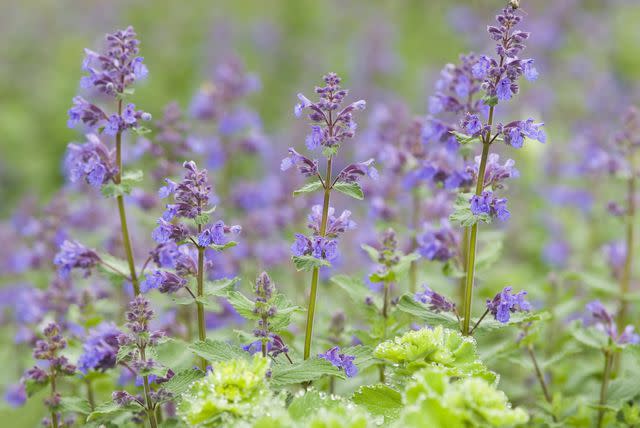
AlpamayoPhoto/Getty Images
Botanical Name: Nepeta cataria
Sun Exposure: Full sun
Soil Type: Loamy, sandy, well-drained
Soil pH: Acidic, neutral, alkaline
If aphids or spider mites have taken a liking to your strawberries, then consider planting catnip nearby. Catnip produces iridoids, which are known to keep these pests away.
Related: How To Get Rid Of Aphids, According To Experts
Asparagus
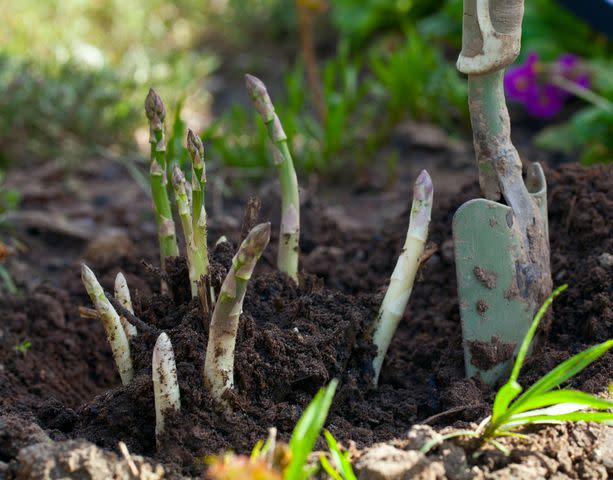
Diana Taliun/Getty Images
Botanical Name: Asparagus officinalis
Sun Exposure: Full sun
Soil Type: Sandy, loamy
Soil pH: Acidic to neutral
When you're considering companion plants that help enrich the soil for strawberries, then asparagus should be at the top of your list. Asparagus puts nitrogen into the soil, which is a key nutrient for strawberries.
Basil
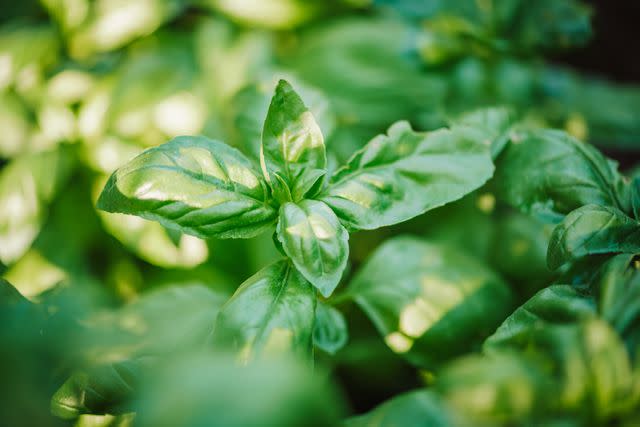
Vasil Dimitrov/Getty Images
Botanical Name: Ocimum basilicum
Sun Exposure: Full sun, partial sun
Soil Type: Moist, rich
Soil pH: Acidic to alkaline
Basil smells wonderful to humans, but it has a chemical called methyl eugenol which is known to repel some of strawberry's biggest enemies, including whiteflies, thrips, and aphids.
Thyme
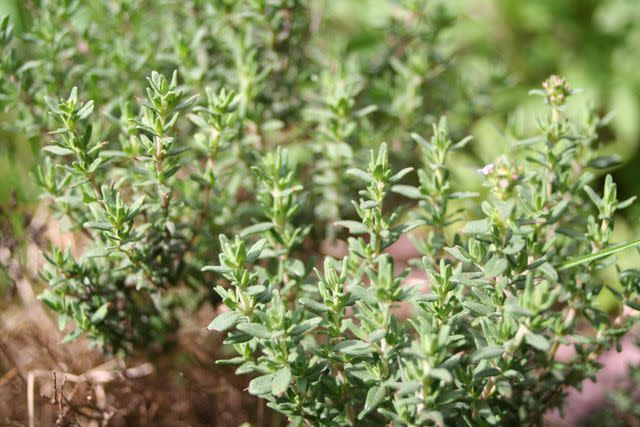
dirkr/Getty Images
Botanical Name: Thymus vulgaris
Sun Exposure: Full sun
Soil Type: Loamy, sandy
Soil pH: Acidic, neutral, alkaline
Earworm, hornworm, and whiteflies will stay away when there's thyme nearby. Yet pollinators are drawn to the flowers of thyme, helping to pollinate strawberries and boost their blooms.
Rhubarb
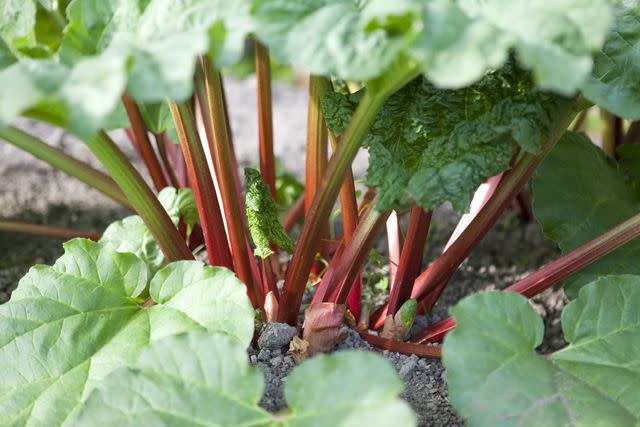
cjp/Getty Images
Botanical Name: Rheum rhabarbarum or Rheum × hybridum
Sun Exposure: Full sun, partial sun
Soil Type: Moist, well-drained
Soil pH: Acidic to neutral
If you're planning on baking a strawberry-rhubarb pie, then you're in luck! Thanks to similar growing requirements, these two summer fruits are excellent companions both in baked goods and in the garden.
Nasturtium
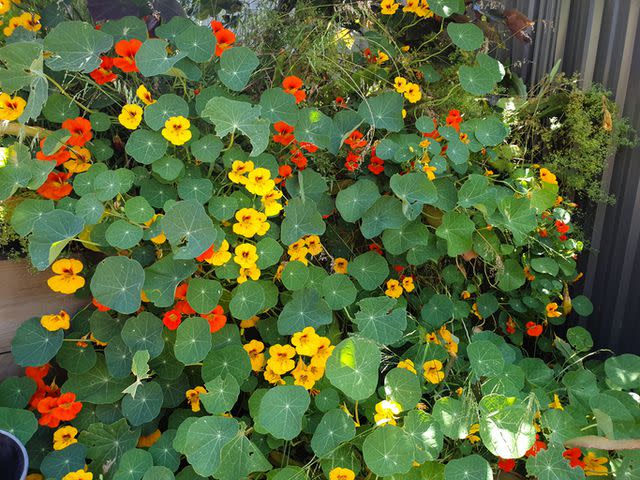
Firdausiah Mamat/Getty Images
Botanical Name: Tropaeolum spp.
Sun Exposure: Full sun
Soil Type: Moist, well-drained
Soil pH: Acidic, neutral, alkaline
The vibrant blossoms of nasturtium will attract bees and other pollinators to your strawberries, while their strong fragrance keeps away whiteflies, aphids, and beetles.
Cilantro
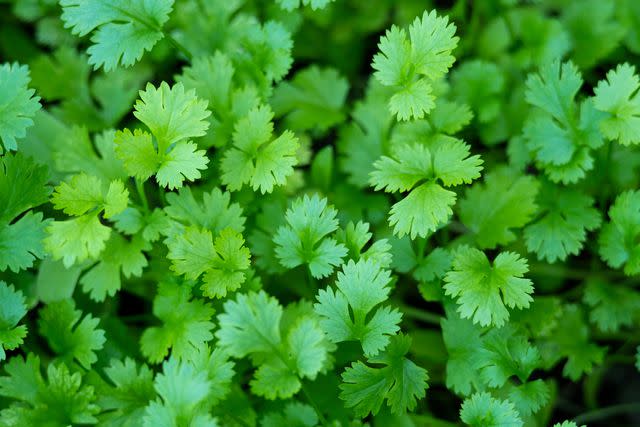
Kritchai Chaibangyang/Getty Images
Botanical Name: Coriandrum sativum
Sun Exposure: Full sun, partial sun
Soil Type: Loamy, moist, well-drained
Soil pH: Acidic
Cilantro and strawberries do well in the same growing conditions, making them excellent garden companions. Both thrive in warm, but not hot, temperatures.
Mint
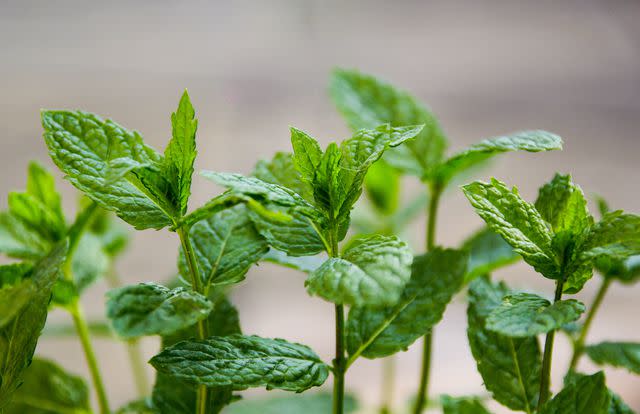
Kinga Krzeminska/Getty Images
Botanical Name: Mentha spp.
Sun Exposure: Full sun, partial sun
Soil Type: Loamy, moist, well-drained
Soil pH: Acidic, neutral
Mint and strawberries get along, provided you plant them in pots or containers next to each other rather than in the ground together. Mint has a reputation for taking over a garden, and it'll have no respect for the boundaries of your strawberry patch.
Don't Grow These Three Plants With Strawberries
While strawberries have lots of friendly companion in the garden, there are also a handful of plants that you should avoid sowing near them. Some of these plants will compete for nutrients, while others can fall victim to diseases that will spread to strawberries if given the opportunity.
Tomatoes
Tomatoes are often afflicted by verticillium wilt, which can easily spread to strawberries. Planting both in the same garden could make an outbreak more likely. Eggplants, potatoes, and peppers have the same issue.
Sunflowers
Sunflowers may be one of summer's most joyful plants, but they tend to block sun to any low-growing companions, including strawberries.
Broccoli
Broccoli and strawberries compete for the same nutrients, which means they'll stunt each other's growth and neither will thrive. Cauliflower and kale also fall into this category.
Related: 10 Best Companion Plants For Sunflowers (Plus, 3 To Avoid!)
For more Southern Living news, make sure to sign up for our newsletter!
Read the original article on Southern Living.

